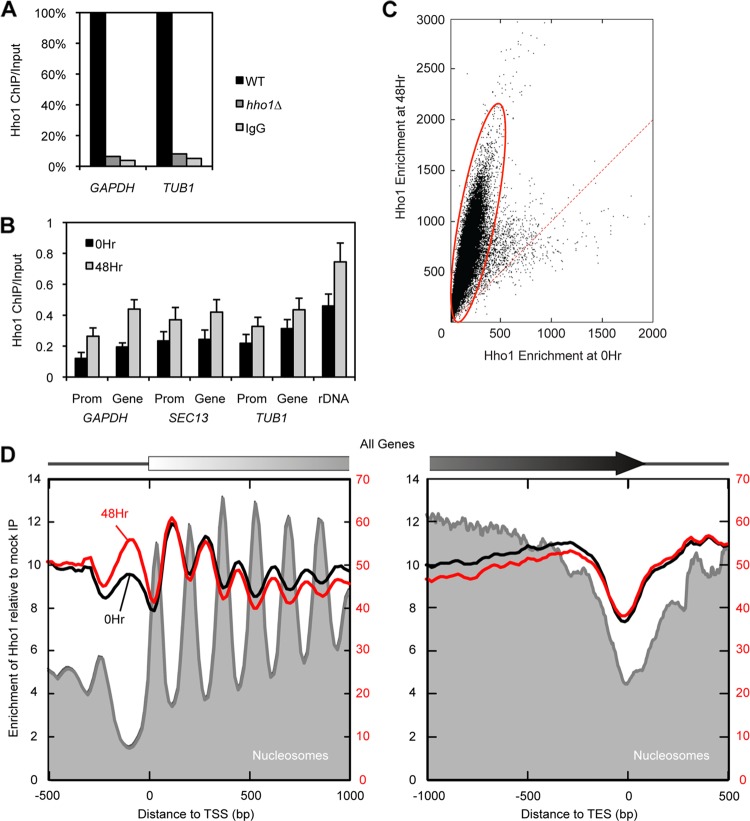Fig 4.
Hho1 binds linker DNA and helps to compact the spore nucleus by increased binding genome-wide. (A) ChIP-qPCR of Hho1 within the GAPDH and TUB1 gene bodies shows the specificity of the antibody against endogenous Hho1. Hho1 ChIP was performed in vegetatively growing WT (set to 100%) and hho1Δ cells. An IgG ChIP control was performed in WT cells. (B) ChIP-qPCR shows that Hho1 binding increases at various housekeeping genes (Gene) and their promoters (Prom) in mature spores compared to yeast cells before the onset of sporulation. Cells were cross-linked in presporulation medium (0 h) and after 48 h in sporulation medium. (C) Comparison of Hho1 enrichment genome-wide before (0 h) and after (48 h) sporulation. The majority of loci show increased enrichment in spores (circled in red). A small population of loci shows constant Hho1 enrichment and overlaps significantly with genes expressed in the spore (P < 0.01). Each dot corresponds to a 100-bp section of the genome. The x and y coordinates represent the total normalized tag counts. Total tag counts between the two conditions were scaled to reflect Hho1 protein levels as determined by Western blotting. The dotted red line marks the 1:1 enrichment ratio. (D) Hho1 binding pattern averaged over all genes (5′ and 3′ ends) before (0 h) and after (48 h) sporulation. Scaled tag counts for Hho1-3×FLAG ChIP and mock-IP data sets were binned in 15-bp intervals relative to the TSS (left panel) or TES (right panel) of 6,576 genes. The ChIP values were then normalized to the mock-IP values and plotted with a 3-bin moving average. Also shown are occupancy levels of nucleosomal midpoints measured in the same genetic background (58).

